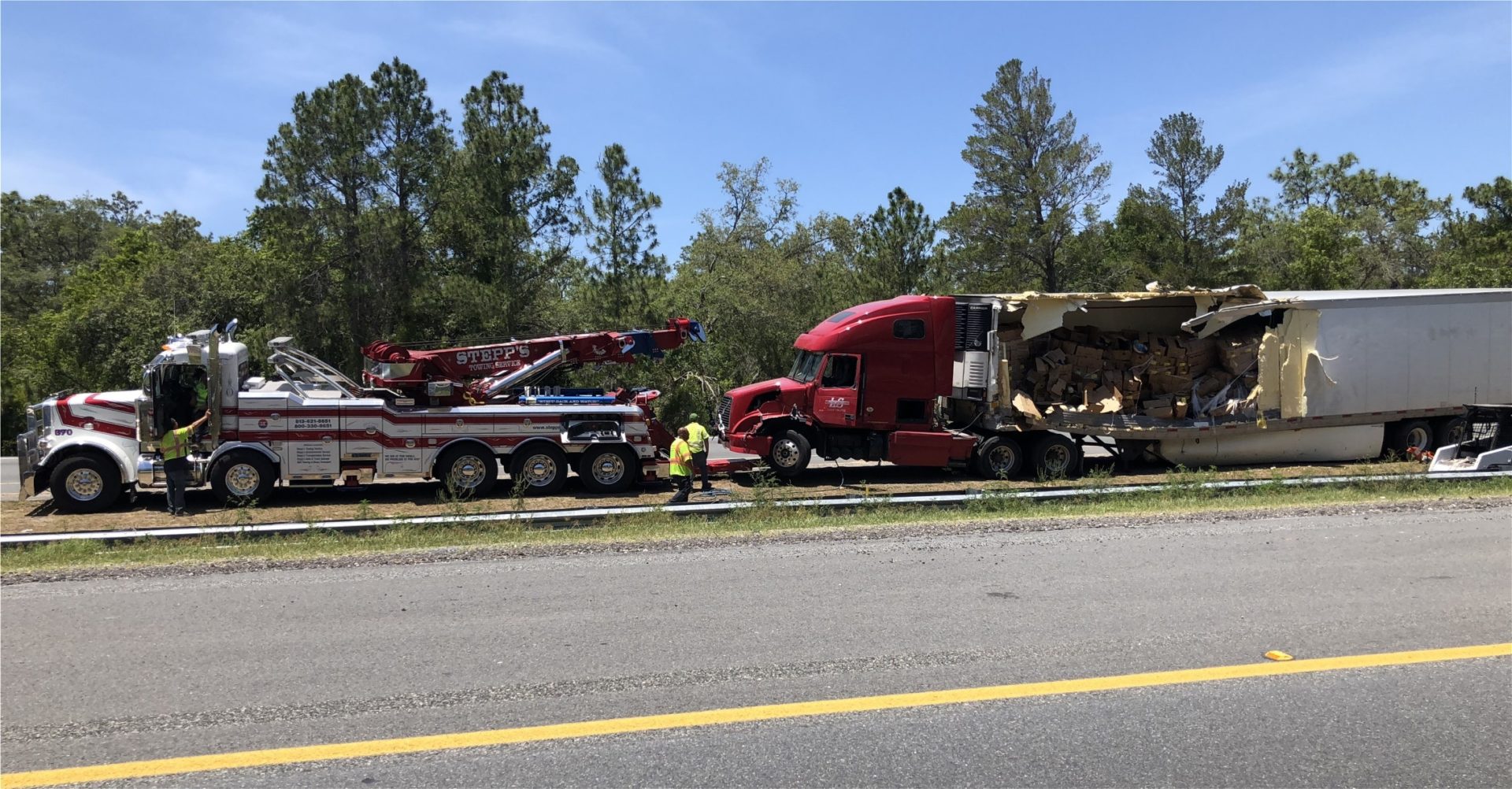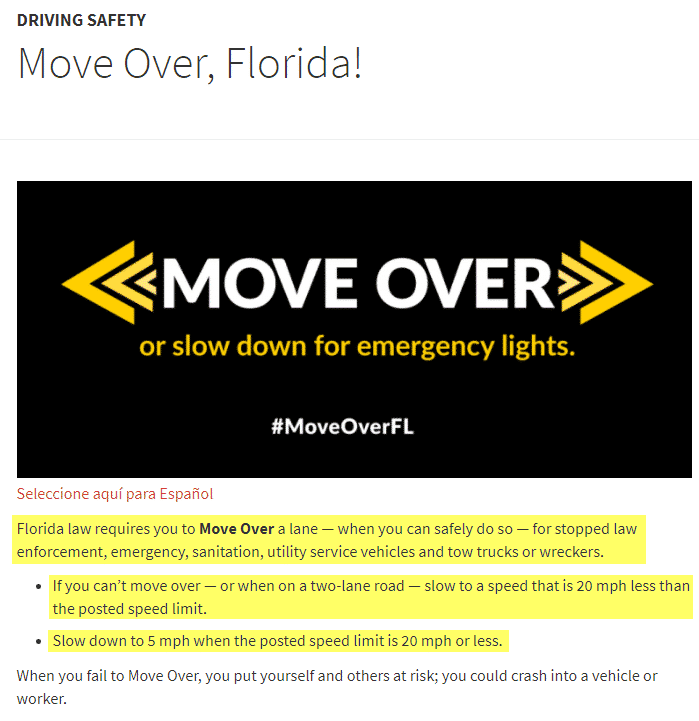Move Over Laws in all 50 States
According to the USDOT blog, all 50 states have now enacted move over laws. There are some significant differences between states, but the basic premise requires changing lanes or slowing down when approaching vehicles stopped on the roadside.
ResponderSafety.com has reported that two emergency responders per day, on average, are struck by passing vehicles. Move over laws were enacted to provide a cushion of safety for law enforcement officers, workers, and others that may be stopped on a busy road or highway. The earliest versions of these laws were often vague and unenforceable. More recent efforts between cooperating agencies have provided model language that is clearer and is being adopted more broadly.

Primary Differences
The move over laws across the 50 states have much more in common than not. The primary differences are the definitions each state has for an emergency scene. In many states they apply only to emergency vehicles. In other states they apply to emergency vehicles and towing vehicles. Alaska includes animal control vehicles in their definition and South Carolina has the broadest definition. Their text includes a location designated by the potential need to provide emergency medical care and is identified by emergency vehicles with flashing lights, rescue equipment, or emergency personnel on the scene.
Based on the South Carolina definition, one can infer that if a common citizen stops to assist another vehicle pulled off the road, there could be potential need for emergency medical care making even that a qualifying emergency scene that the law would apply to.
What Move Over Laws Have in Common
All of the move over laws place responsibility on the driver of a motor vehicle to take specific action when approaching an emergency scene. The driver must change lanes if the adjacent lane is available and the maneuver can be performed safely. Drivers must also slow down and control their vehicle to avoid collision. The image below from Florida Highway Safety and Motor Vehicles website tells Florida drivers exactly what they need to know.
I recall, many years ago, being at the side of the road on Highway 17 in the Santa Cruz Mountains. I was driving a friend’s pickup truck when the engine seized because the oil was too low. Stuck on a curve with 2 lanes of traffic moving fast in both directions, and a concrete barrier between, I was alone and unprepared. There was very little room at the roadside and no way to move the truck further off the road. I waited in the truck hoping someone would stop to help. It was unnerving that drivers did not slow down, and absolutely frightening when one drove by so close he clipped off the side view mirror and sent it tumbling down the hill.
Common sense and human decency dictate if someone, if anyone is in distress at the side of the road, whether that distress is a heart attack or a flat tire, give them and anyone who is assisting them plenty of room. Move over laws ensure a higher level of protection for public servants and a consequence for violators. Bottom line, they encourage us all to do what we know is the right thing.
Driver Training
Play this short video to remind your drivers and employees of the Move Over Law.




